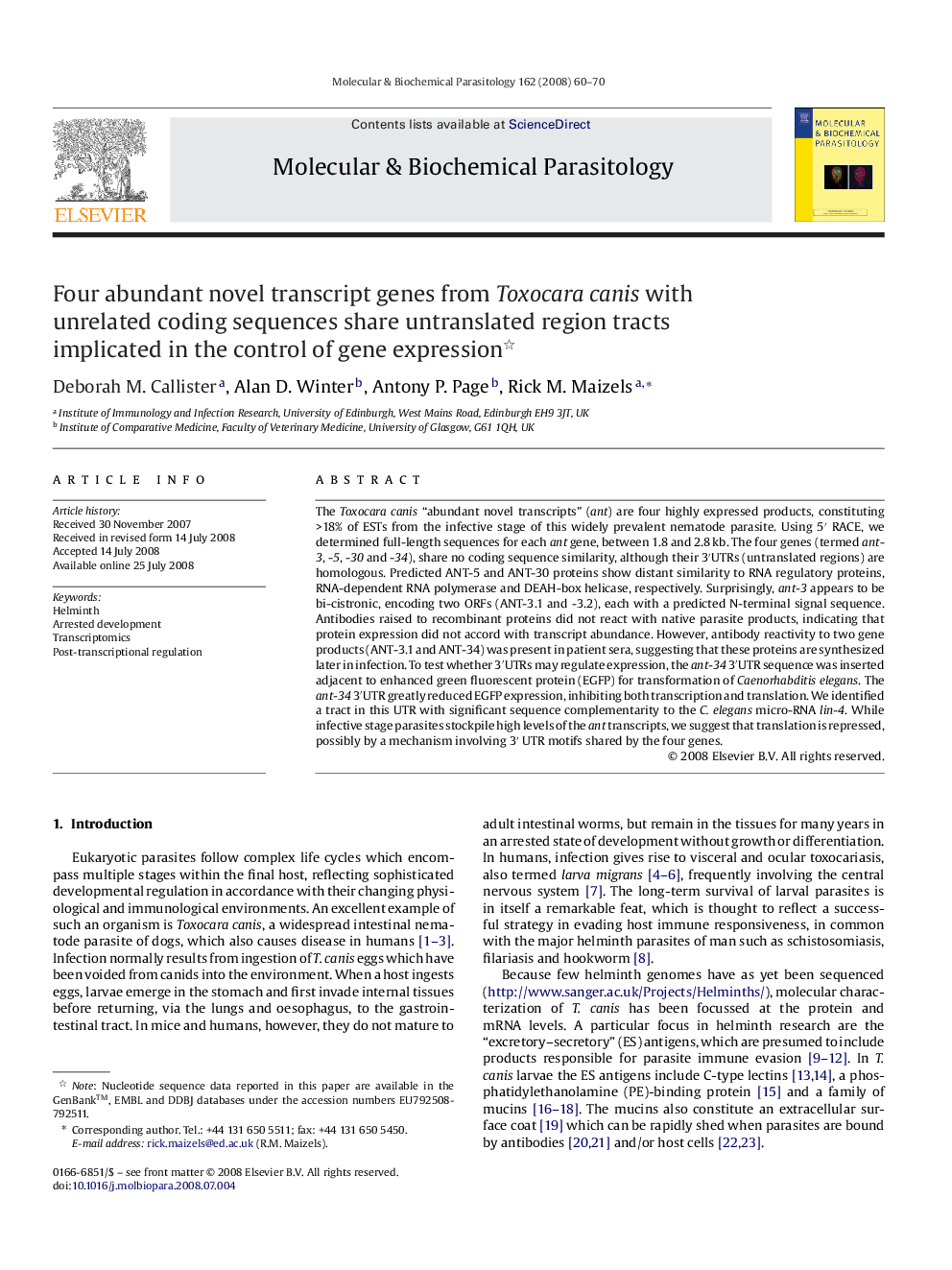| Article ID | Journal | Published Year | Pages | File Type |
|---|---|---|---|---|
| 2830096 | Molecular and Biochemical Parasitology | 2008 | 11 Pages |
The Toxocara canis “abundant novel transcripts” (ant) are four highly expressed products, constituting >18% of ESTs from the infective stage of this widely prevalent nematode parasite. Using 5′ RACE, we determined full-length sequences for each ant gene, between 1.8 and 2.8 kb. The four genes (termed ant-3, -5, -30 and -34), share no coding sequence similarity, although their 3′UTRs (untranslated regions) are homologous. Predicted ANT-5 and ANT-30 proteins show distant similarity to RNA regulatory proteins, RNA-dependent RNA polymerase and DEAH-box helicase, respectively. Surprisingly, ant-3 appears to be bi-cistronic, encoding two ORFs (ANT-3.1 and -3.2), each with a predicted N-terminal signal sequence. Antibodies raised to recombinant proteins did not react with native parasite products, indicating that protein expression did not accord with transcript abundance. However, antibody reactivity to two gene products (ANT-3.1 and ANT-34) was present in patient sera, suggesting that these proteins are synthesized later in infection. To test whether 3′UTRs may regulate expression, the ant-34 3′UTR sequence was inserted adjacent to enhanced green fluorescent protein (EGFP) for transformation of Caenorhabditis elegans. The ant-34 3′UTR greatly reduced EGFP expression, inhibiting both transcription and translation. We identified a tract in this UTR with significant sequence complementarity to the C. elegans micro-RNA lin-4. While infective stage parasites stockpile high levels of the ant transcripts, we suggest that translation is repressed, possibly by a mechanism involving 3′ UTR motifs shared by the four genes.
